Unexceptional Consoles
by Alex Custodio, Michael IantornoAbstract
This article proposes the study of unexceptional consoles -- devices that have been relatively uncelebrated by either the public or the academy and thus sit outside the standard canon of game history. From Radioshack’s ill-defined Electronic TV Scoreboards to the multifarious Pong consoles released in the seventies, these devices exist in multiplicities and often lack robust documentation and distinct naming conventions, subsumed as they are under brand titles or else obfuscated by marketing technobabble. This dearth of documentation makes it difficult for scholars to archive, access, study, or even identify these objects. Such a gap recursively contributes to these consoles’ ongoing absence from much of videogame history. Lacking the distinct separation between hardware and software found in modern consoles, ill-defined in corporate documentation, and often conflated with similar devices, unexceptional consoles evade easy platform definitions and methods. This article begins by summarizing the problematic that spurred the development of this research project: the inconsistencies between (and within) industry, user and scholarly discourses that establish the names of videogame consoles. Next, it fleshes out the idea of unexceptional consoles, drawing upon existing platform studies scholarship, broader discussions of the canon in games and literature and material investigations into videogame technologies. Then, using the devices in the Magnavox Odyssey line as a case study, this article offers an overview of the discourses that guide certain devices toward prestige and others to mundanity. The analysis closes with a short reflection on how the notion of unexceptional consoles may foster new approaches to thinking about videogame history.
Keywords: consoles, folksonomies, Magnavox Odyssey, media history, naming, platform studies, Pong, Radioshack, research collection, unexceptional
Introduction
In 1975, Atari released their home console version of Pong, the now-venerated table-tennis simulation videogame [1]. Having initially gained popularity as an arcade machine in North America (1972), Pong made ripples around the world through official updates such as Barrel PONG (1972) and PONG Doubles (1972) (Wolf, 2008, p. 36) and indirectly by way of several unauthorized clones. As most media histories are quick to celebrate, the household version of Pong became a phenomenon following its successful Christmas release, and its popularity contributed to the emergence of the home videogame industry.
What popular histories only allude to, however, is that, like many early videogame consoles, Pong exists in multiplicities. While Atari’s first Pong console -- released under the Sears Tele-Games brand -- can perhaps make a claim to being the canonical home release, a deluge of updated and modified versions soon followed. Between 1975 and 1977, For example, Pong IV (1976) increased the number of players from two to four, while Ultra Pong (1977) provided 16 different game modes (Winter, n.d.). From a contemporary perspective, the subtleties between these iterations can be difficult to discern: many Pong consoles share the same name; some have nearly identical appearances; and most have long been divorced from informative paratexts such as boxes and manuals. This issue is only exacerbated by the enormous number of Pong clones proliferated throughout the 1970s. The Coleco Telstar product line, featuring 14 models released between 1976 and 1978, sold over a million units and offered comparable features to other Pong-like consoles (Herman, 1997, p. 20). Unlike modern videogame developers, which lean heavily into generational logics that differentiate one console release from another through supported lifespans and standardized software formats (Arsenault, 2017, p. 12), Atari and other companies quickly churned out Pong (or Pong-inspired) units as standalone objects -- closely following the release strategies of toys or boardgames. The result of these economic and technological choices is an enormous accumulation of Pong consoles, and these many devices can be difficult to identify, differentiate and document.
This plenitude of Pongs becomes a unique research challenge for game historians, librarians, archaeologists and hobbyists. How does one, for example, clearly differentiate between Super Pong IV (1976) and Super Pong IV (1977) when the consoles were released months apart by the same company? While appending a title with a date (as we did above) marks a separation, it does little to highlight the technological (e.g., hardware), paratextual (e.g., box art) and cultural (e.g., audience reception) differences between devices. Moreover, while differentiation by date may seem like an obvious answer, This is, of course, not a problem exclusive to the famous ball-and-paddle videogame. Other home consoles suffer from similarly muddy distinctions -- sometimes even featuring disparate naming conventions across their own box art, advertising materials and console shells. This ambiguity makes it difficult for users and scholars to know what to call one of these objects, much less how to situate it in relation to similar objects.
To address this problem, we propose the study of what we call unexceptional consoles -- devices that have been relatively uncelebrated by either the public or the academy and that thus sit outside the standard canon of game history. Existing in multiplicities, these devices often lack robust documentation distinct naming conventions. Instead, they are subsumed under brand titles or else obfuscated by marketing technobabble. Such a gap recursively contributes to these consoles’ ongoing absence from much of videogame history. Unexceptional consoles evade easy platform definitions and methods because they are ill-defined in corporate documentation and easily conflated with each other.
However, it is not neglect alone that prompts us to advocate for the study of such objects. Our aim in this article is not to advocate for the dismissal of scholarship centered around culturally or commercially significant platforms. Rather, we propose a more expansive approach to studying videogame hardware that attends to and explicitly names the mundane as a way of producing a more holistic and materially grounded understanding of videogame technologies, industry protocols and techniques of use. Unexceptional devices invite us to explore the everyday aspects of videogame history, from the length of power cables to the proliferation of terms like “videogame” and identities like “gamer” in the popular imaginary. They help discern industry trends that fall outside of dominant innovation narratives, which tend to discard swaths of consoles as also-rans, despite widespread usage. Finally, they serve as an intervention against established historiographies that typically rely on accessible documentation provided by prominent (and privileged) actors.
This is not to say that these devices have been wholly neglected. While unexceptional consoles are given short shrift in academic studies -- typically glossed over as liminal technologies -- dedicated hobbyist communities have attempted to preserve their memory through informal archives and shared documentation. These often take the form of online repositories of digitized ephemera (photos of box art, scans of user manuals) and documented forensics whereby hobbyists open the platform to examine internal components, identify the model or edition, and make claims about the object’s technical specifications. By drawing attention to black-boxed hardware revisions, hands-on forensics challenge the notion that a platform is a historically stable object. This material engagement invites us to think about the technical, cultural and political economic conditions that occasioned the development of distinct hardware revisions in the first place.
Our starting point in the study of unexceptional consoles is the question of how to engage with collections of videogame technologies in a way that attends to material specificity. Naming quickly became an important way to ground our research in the nuances of the objects in the collection. Recognizing contested naming conventions becomes vital if scholars want their work to be legible in and out of the academy, so one of our first steps was to explore how console names are negotiated between what we identify as three key stakeholders: scholars, industries and users. Taking hardware examples sourced from the Residual Media Depot, we trace how names shift or become standardized through corporate documentation, fan folksonomies and academic formalization processes. From there, we situate unexceptional consoles as part of a broader inquiry about canonicity and we articulate the stakes of excluding these objects from scholarship. Using Magnavox’s Odyssey line as a case study, we conclude with an example of how identifying and studying the unexceptional can help scholars produce a more robust and accurate history of the videogame hardware landscape. Our hope is that these initial steps will galvanize further research into forgotten hardware objects
Methodology
The authors’ concept of unexceptional consoles was, ironically, born out of exceptional circumstances. In October 2020, shortly after being re-admitted to Concordia University amidst the pandemic, we (the authors of this study) began our long-anticipated cataloging of the Residual Media Depot’s holdings [2]. A project of the Media History Research Centre at Concordia University’s Milieux Institute for Arts, Culture and Technology, the Residual Media Depot takes as its stated goal to provide opportunities for collaborative interdisciplinary research into the technological, cultural and institutional aspects of material media. Under the direction of Darren Wershler, the Residual Media Depot’s collection largely comprises early videogame consoles and their attending ephemera with a focus on modified (“modded”) hardware. Situated between the preservationist approach of an archive and the hands-on imperative of a lab, the research collection provides a record of media and paratexts that can be observed, played, taken apart and otherwise handled (Wershler et al., 2022, p. 221). The Residual Media Depot’s status as an active research collection makes it challenging to document, since its holdings seldom remain static for more than a few days at a time. Such circumstances made the early days of the COVID-19 pandemic a morbidly ideal moment to embark on our cataloging journey. The intended goal of these outcomes was to make our collection more accessible for researchers working with the materials at the Residual Media Depot and for scholars engaging remotely.
By the summer of 2021, we had cataloged 900 individual objects, organized into 140 unique accessions using over 50 data fields. These fields included name, manufacturer, serial number, dimensions, inputs, connections and more. These objects represent a partial first pass of the Residual Media Depot’s holdings, with our efforts focused primarily on North American and Japanese home videogame consoles produced in the seventies and eighties, a time when videogames were only just becoming household fixtures.
Attending to the Residual Media Depot’s collection of computing technologies -- which is notable for being one of the largest collections of boxed videogames in Canada -- allows us to encounter devices that most researchers cannot. As we began our cataloging, we quickly became aware that working with material media collections would require a recognition that “even individual electronic objects from a single run can differ from each other in significant ways” (Wershler, 2022, p. 93), many of which are not obvious at first glance. Tasks we believed would be simple, such as sorting Atari Joysticks by model and release date, proved onerous due to the subtle revisions Atari had made to the peripherals after their initial release. Each accession required us to open the controller, identify its inner electronics and consult hobbyist documentation to confirm its origin. As Wershler notes, these technologies “may look identical in every respect, but inside the casing, the main board design, onboard components, and firmware may be radically different” (2022, p. 93). Game studies literature often elides hardware revisions, which tends to ascribe a stability to these objects that they do not actually possess.
This issue extends beyond internal machinations to the labeling of game consoles; when approaching lesser-known devices, it was often difficult for us to conclusively determine their official name. Many of the early consoles we worked with lacked internal consistency between the name on the console, the name on the box and the name in the owner’s manual, advertising pamphlets and other paper ephemera that accompanied them. Some systems had consistent branding at the time of their release, but eventually took on alternative or additional names due to several factors, including their manufacturer’s rebranding strategies, scholars’ historicization of the objects, or contemporary users’ reimagining of the system through playing, hacking and modding. Additionally, although we refer to all these devices as “videogames” throughout this article, we are largely referring to objects created in a period that predates widespread usage of the term. This is a recurring media history conundrum. Eisenstein documents it well in her study of the age of print incunabula (2005, p. 11), highlighting the problematic practice of historicizing media by foisting modern definitions upon it. One of our first and most difficult tasks was therefore to reconcile these inconsistencies and establish clear, consistent vocabularies around names. In other words, we had to think about who decides what a console is called, and what arrangements of power and expertise grant them authority to do so.
What’s My Name Again?
Apperley and Parikka note that, in order to study a videogame platform, the “evidence of its existence must be unambiguous” (2018, p. 353). That is, there must be enough consistency in its presentation and marketing materials for scholars to recognise it as a discrete technical object. This consistency is often taken for granted, especially with newer game consoles that are released alongside a wealth of documentation and enormous advertisement campaigns. But not all devices readily make their presence known and their names and histories are not fully determined by their manufacturers. Thus, whether approaching puzzling Pongs or ubiquitous Game Boys, academics must consider three different groups of stakeholders whose contributions inform the way they think about a given piece of hardware: scholars, the industry and hobbyists.
Scholars
Scholars may have different reasons for naming or valorizing certain technologies over others, based on what they study and how they approach their research objects. The importance of these identification practices cannot be understated. Journal articles, books and library indices are regarded as credible sources for all sorts of research ventures and funding opportunities, influencing which technologies are deemed worthy of future study and dictating how they will be described.
Naming practices are a key aspect of this paradigm and are perhaps most formalized within controlled vocabularies put forward by the GAme MEtadata and CItation Project (GAMECIP) [3], a multi-year investigation into “the metadata needs and citation practices surrounding computer games in institutional collections” (About the Project, n.d.). Library science initiatives have long grappled with the challenge of naming and cataloging videogame technologies, not only because of the aforementioned issues, but also due to these technologies’ limited inclusion in public collections. As a result, proposed controlled vocabularies tend to narrowly focus on consoles and software that are commercially successful, widely available and well established in existing histories and platform studies. The GAMECIP’s vocabulary predominantly features releases from big industry players, such as Atari, Nintendo, Sega, Sony and Microsoft, but overlooks pivotal technologies from smaller companies, such as the Magnavox Odyssey. GAMECIP also glosses over significant hardware iterations, such as the multifarious versions of the Nintendo Game Boy (GAMECIP - Computer Game Platforms, 2015). While GAMECIP’s software vocabulary is more robust, perhaps due to the standardization of game cartridges and discs and their similarity to existing media formats, it generally presumes a distinct separation between hardware and software that is not congruent with early videogame devices. These oversights make GAMECIP incompatible with early consoles (such as the aforementioned Pong variations), which are omitted from the controlled vocabulary and come hardwired with 1-3 games.
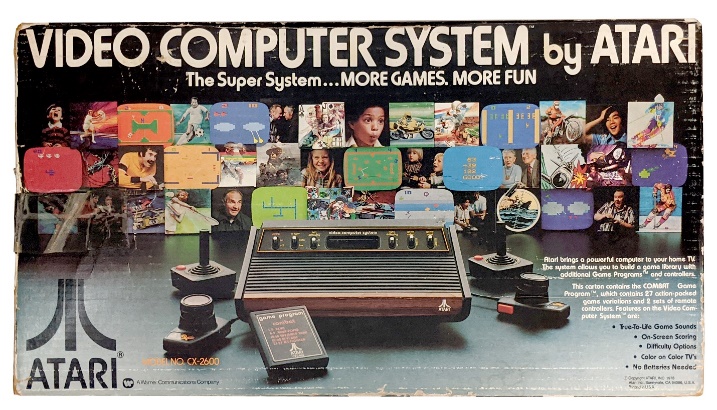
Figure 1. The Residual Media Depot’s Atari VCS (1977). Click image to enlarge.
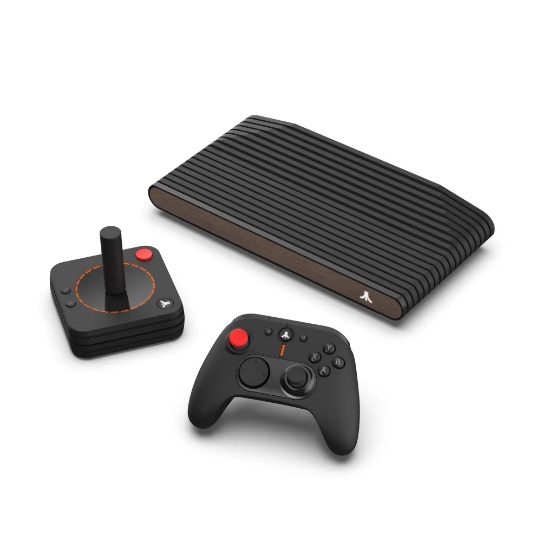
Figure 2. An image of the new Atari VCS (2021) from the official website (The All-New Atari VCS, n.d.). Click image to enlarge.
Additionally, library discourses often conflict with other prominent scholarly sources. This is particularly clear for the Atari Video Computer System, whose name is the subject of debate even among the members of our research team. Atari released their flagship home videogame console as the Atari Video Computer System (VCS) in 1977 (Figure 1). However, after the release of the Atari 5200, Atari rebranded the VCS as the Atari 2600, deriving this retronym from the console’s product number. This shift in the industry has resulted in different priorities between the GAMECIP vocabulary (Atari 2600) and the MIT Press’ platform studies series’ preferred name (Atari VCS). To further complicate the matter, Atari recently released the Atari VCS (2021) (Figure 2), a microconsole that mimics the form of an Atari 2600. The Atari VCS plays games once available on the 2600, the 5200 and arcade machines, and incorporates the functionality of a modern-day PC (Atari VCS Store, n.d.). As a consequence of Atari’s savvy branding and SEO strategies, Google searches for “Atari VCS” now overwhelmingly return results for the 2021 product rather than the 1977 hardware. As Peters keenly notes, Google “is a convenient target to see how the arts of memory are altered by digital infrastructure” (2015, p. 318). In this case, the search engine emphasizes a popular, currently available version of the VCS over previous iterations. Depending on who you ask, both (or neither) of these consoles can be referred to as the Atari VCS, and there is little institutional impetus to resolve the dispute even as patterns of use continue to shape how users and scholars conceive of these objects.
Industry
This leads us to a number of corporate strategies we have identified under the umbrella of industry, which may or may not have been consistent with how companies initially branded and marketed the system. Scholars can determine the industry’s name for a system through the technology itself (the name on the console, the codename printed on the circuit board) and through its paratexts (the box in which it came, the owner’s manual packaged with it, the advertisements used to sell it, etc.). This is an important addition to scholarly discourses because it grounds our scholarship in the material evidence present in the Residual Media Depot’s research collection. However, the inconsistencies across official materials often work against our desire for precision, exposing gaps in scholarly discourses while posing seemingly irreconcilably identification issues.
The Residual Media Depot’s RadioShack Electronic TV Scoreboard (1978) exemplifies the inconsistent naming conventions that were commonplace among early videogame developers (Figure 3). The home console is one of many similarly named devices created by Tandy and distributed by RadioShack, all of which integrate small libraries of Pong-era sports games. While the box art prominently displays the title “RadioShack Electronic TV Scoreboard,” we find ourselves faced with contradictory messaging on the console itself and within the instruction manual. The console labels the device as the “RadioShack Full Color TV Scoreboard” while the instructional manual simply refers to it as the “Color TV Scoreboard,” remixing a word soup of identifiers across hardware and paratexts. RadioShack further complicated this issue by releasing a bevy of devices between 1977 and 1982 loosely organized under the Electronic TV Scoreboard banner, while advertising them in their catalogs without distinct names. Instead, they favored descriptive phrases such as “6 Fast-Action Games in Full Color” (RadioShack Catalog, 1978, p. 123) (Figure 4). While these advertisements offer a loose timeline for the family of hardware devices, they fail to establish official names or release dates beyond catalog availability. Notably, in the product’s first appearance in the 1977 catalog, it was not even referred to as a videogame.
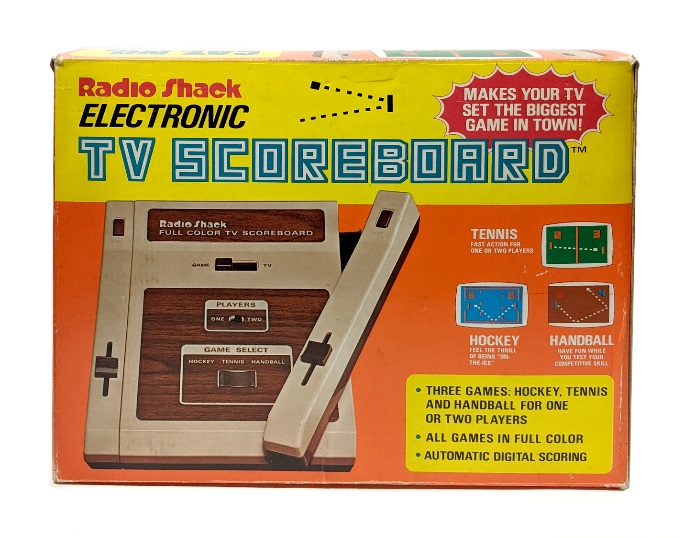
Figure 3. The Residual Media Depot’s Radioshack Electronic TV Scoreboard (1978). Click image to enlarge.
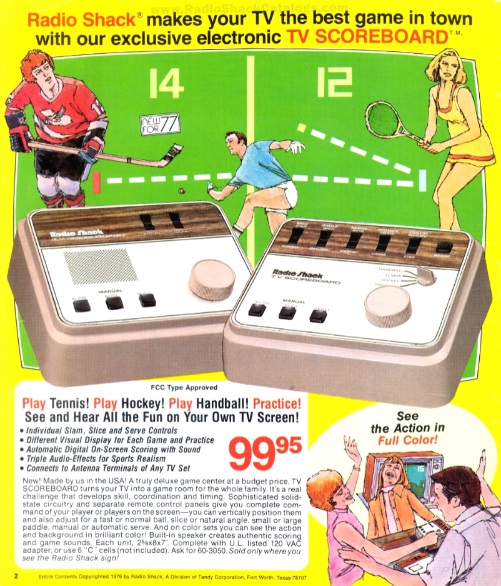
Figure 4. An excerpt from the 1977 Radioshack catalog. Click image to enlarge.
Our ongoing material engagement with the RadioShack Electronic TV Scoreboard to be both revealing and frustrating. While we are able to hold the device in our hands, hook it up to a television, and play its games, we are wracked with uncertainty over what to call it. Compounding this issue is the fact that, unlike developers such as Nintendo and Sega, that proffer the virtues of their old consoles through reproductions and skeuomorphs, Tandy and RadioShack have drifted away from videogame development entirely and rarely reference that era of their corporate histories. As a result, videogames released as part of the RadioShack Electronic TV Scoreboard brand never truly acquired unique identifiers and likely never will.
As we documented the Residual Media Depot’s collection, we attempted to resolve these contradictions not only to better distinguish between the objects on the shelves but also to be able to talk about specific hardware revisions in research and teaching contexts. For internal use, accession numbers allow us to point to a box and record what is inside it -- hardware, packaging, ephemera -- but that does little to address these discrepancies in public-facing scholarship. We settled on adapting names from the console itself and then including the titles printed on the box and advertising materials under a separate heading for alternative names and spellings. This allows us to more easily identify objects that have been severed from their paper ephemera while still approaching the hardware on its own terms. More granular details about the hardware come up in metadata fields that list physical descriptions, integrated games and inputs and outputs.
Users
Users are often described as audiences and publics who interact with systems, regardless of whether these interactions are intended by the developer or not. Collective discourse consequently claims some names are “true” or “authentic” based on users individual and communal histories with the technologies in question. Such discussions echo Marvin’s study of expertise within textual communities, where groups assemble around central “texts and their designated interpreters” (1988, p. 12), creating distinctions between expert and layperson, insider and outsider. Naming a console is part of the ongoing process of building expertise and establishing common truths within user communities, but, importantly, it does not always reinforce commercial intentions. These user communities often fill in knowledge gaps that scholarly perspectives overlook and that corporate interests have left behind.
Unlike corporate naming practices, which rely on industry stakeholders christening a device upon release, folksonomies are determined collectively based on users’ activities. Many of these designations are rooted in fans’ desires to generate expertise around material objects and are formalized through their inclusion in shared community texts. These texts can sometimes be found on fan websites and message boards, but they are often rooted in tacit knowledge generated before the emergence of the Internet and subsequently passed down by community experts. As Jenkins has long elaborated, echoing many of Marvin’s points, “knowledge communities form around mutual intellectual interests” (2006, p. 20) to establish expertise that may build upon -- or oppose -- corporate histories and documents. Naming conventions may begin as embellishments on industry standards, such as the tendency in Game Boy modding circles to reject the official marketing title of the handheld in favor of model designations such as DMG (Game Boy), MGB (Game Boy Pocket) and CGB (Game Boy Color) -- all of which allow for quick differentiation between devices in the Game Boy product line (New User Guide, 2023). Alternatively, some folksonomies organically evolve from long-popularized monikers. Atari fans distinguish between individual models of the Atari 2600 by applying nicknames with ambiguous origins: the “heavy sixer” VCS produced in Sunnyvale, California; the “light sixer” manufactured in Hong Kong with a thinner plastic shell; the “Vader” encased in black plastic with four switches; and so on (Harper, 2014). In this category, we therefore also include the folksonomies that arise within communities of hackers, hobbyists and modders.
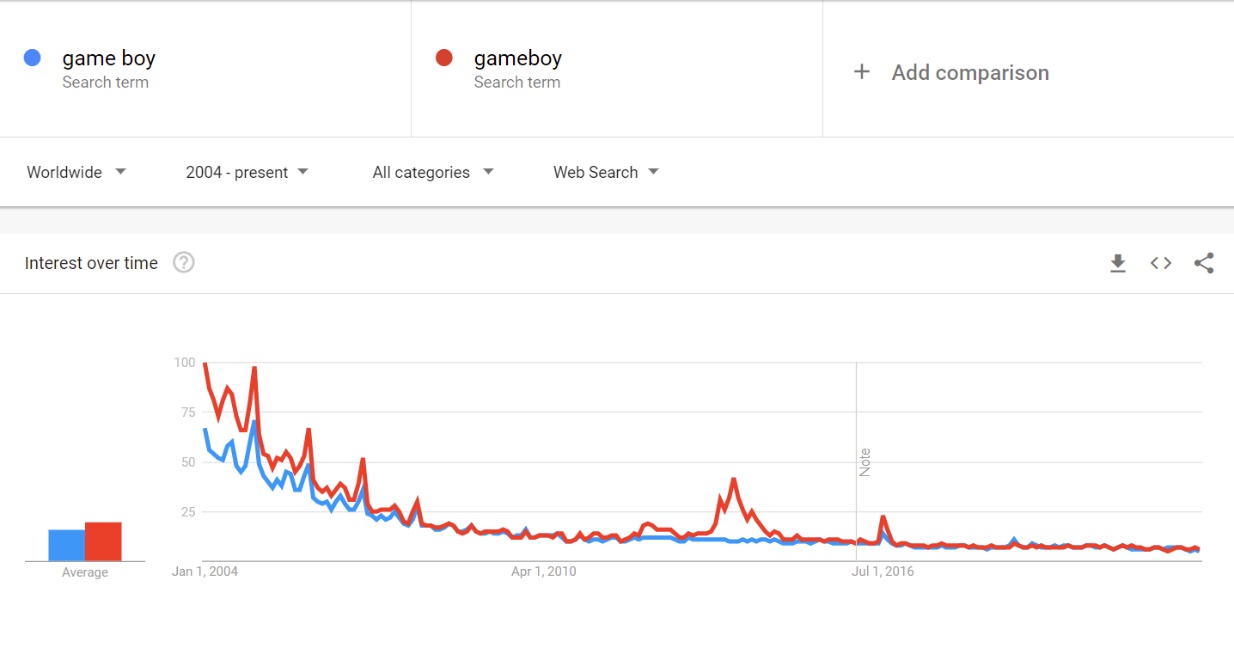
Figure 5. A Google Trends comparison of “Game Boy” (Nintendo’s title) versus “Gameboy” (common user spelling) between 2004 and 2022. Click image to enlarge.
Although it is tempting to reject folksonomies in favor of so-called “official” sources -- this is certainly the tendency of many platform studies -- these names reveal important details about material objects and the communities that form around them. Nicknames for the Atari 2600 are valued by collectors due to their ability to lend specificity to slightly different variations of the device, some of which were not even acknowledged by Atari as being significant enough to advertise. Perhaps less productively, folksonomies can also occlude the official title of a device, such as how Nintendo fans’ tendency to misspell “Game Boy” as “Gameboy” has made Google searches for the term somewhat fraught (Figure 5), forcing hobby shops to include both spellings in their search-engine optimization (SEO) if they want to hit Google’s front page. Weinberger highlights two sides to this debate in his discussions regarding that these practices offer the “benefit of greater precision and recall without having to conform to ways of thinking that are not natural to us” (2005, p. 5). Certainly, folksonomies played a role in lending greater specificity to the collection’s devices and, conversely, further complicating our naming and archival processes.
Unexceptional Consoles
While some videogame objects in the collection require us to contend with contradictory assessments of how particular consoles should be named, sorted and documented, the bulk of the technologies we have databased never gained enough of a following for these debates to arise in the first place. This brings us to the second problem: the lack of available documentation for unexceptional consoles.
Platform scholars, game researchers and fan communities are often guilty of focusing on technologies that are either resounding successes or compelling failures -- terms that are problematic from the outset for the way they tend to be framed in relation to commercial, critical and cultural reception in North America. And yet videogame researchers have historically been evasive when defining what commercial and critical success entails. When filling out grant applications or drafting project proposals, scholars often point toward sales figures for the former and review scores or industry accolades for the latter. While these can be useful metrics, they tend to oversimplify complex evaluations of success and failure. Arsenault has pushed back against straightforward notions of commercial prosperity in his platform study of the Super Nintendo Entertainment System (Super NES), noting that, while the console was immensely profitable, it ultimately led to a down period in Nintendo’ fortunes (2017, p. 4). Inversely, some game companies favor other metrics -- such as increasing market share or building a player base -- over profitability, perhaps most evident with Roblox’s high market valuation and negative earnings (Guichard, 2021). Review scores and industry accolades can be equally unreliable. Review bombing is a common practice, especially amongst games with themes that deviate from heteronormativity (Tassi, 2020), and may skew scores on aggregating websites such as Metacritic. Additionally, industry award shows have long been criticized for being marketing tools rather than accurate representations of game quality (Martens, 2020), making it difficult to discern if a game’s accolades are deserved.
Although most would be hesitant to admit it (present company included), these commercial and critical metrics are often leveraged retroactively to justify scholarly interest and research funding. What they fail to acknowledge is the even more opaque factor of cultural success. Cultural success draws on ambiguous metrics (user experiences, dominant discourse, etc.) to determine which technologies are worthy of attention. The greater the hardware or software object’s cultural appeal, the more people who write and talk about it; and the more people who write and talk about it, the more robust its archive will be for researchers. Apperley and Parikka provide a useful critique of the scholarly lens for determining success, observing that a videogame platform “must have produced and distributed a sufficient volume of software and other secondary materials to make up an archive that allows it to be stably reconstituted through platform studies” (2018, p. 354). The overrepresentation of the cultural giant Nintendo in the MIT Press’ platform studies book series underscores this argument [4]. Media companies themselves magnify these trends through remakes, remasters and digital rereleases of past successes, bolstering already well-populated platform archives and reinforcing the object’s position in the cultural imaginary [5]. In other words, scholars study these objects for their cultural relevance, and their existing relevance becomes recursive justification for further studies.
One of the points this perspective highlights is the importance of longevity and stability in establishing whether a videogame platform is worthy of study and veneration. The question of the archive helps explain why many commercial and critical successes fall to the wayside. While Radioshack’s Electronic TV Scoreboards and Magnavox’s numerous Odysseys were popular and profitable enough to merit countless successors, their “one and done” design principles granted each device a sort of forgettability. One console can be easily confused with another in the same product line, instilling in them a mundanity when compared to more long-lived consoles such as the Atari VCS and the Super NES. The latter devices (and most consoles that followed)bolstered their lifespans with vibrant software libraries rather than iterative hardware releases.
What constitutes success and what gets relegated to the realm of the forgettable is by no means unique to videogames; rather, what we arrive at is the broader question of canonicity. Originating from the Greek κανώ, meaning “rule,” the term canon generally refers to authentic or approved works of literature, art, or culture that are recognized as worthy of attention and legitimacy. The canon informs what works scholars treat with reverence, what texts professors include on their syllabi, and, as a result, what media are most quickly recognized by name. Although the canon is malleable to some degree and continuously shifting, it is not infinitely expandable. While individuals tend to have their own sense of what cultural objects are “the best” or most significant to their lives and histories, the canon differs from personal preference in that it is backed by institutional power -- that is to say, it is reified by museums, libraries, universities and critics. As a result of where this institutional power originates, canons -- literary, artistic and so on -- are also often shaped by the interests of whiteness, masculinity, heteronormativity and ableism (Ruberg & Phillips, 2018) [6].
Canons are touted as important tools for legitimizing fields. In order to fully understand and evaluate a work, it needs to be approached in “relational terms” by constructing what is and is not part of the canon (Bourdieu, 1983, p. 311). In 2006, when proposing a game canon -- a list of videogames to be considered for preservation by the Library of Congress -- Henry Lowood said, “Creating this list is an assertion that digital games have a cultural significance and a historical significance” (Chaplin, 2007). Modeled after the efforts of the National Film Preservation Board, the game canon emerged at a time when videogames were only just beginning to become the subject of scholarly study, and it served as a legitimizing argument for games’ preservation alongside literature, art and cinema. The initial proposal -- drafted by Lowood, fellow Stanford researcher Matteo Bittanti, game designers Warren Spector and Steve Meretsky, and game journalist Christopher Grant -- consisted of 10 titles, including Spacewar!, Zork, Tetris and SimCity. While the significance of many of these games was obvious, other inclusions highlighted the difficulty in establishing a global game canon. For example, Sensible World of Soccer lacked the worldwide impact of other included titles despite a strong regional following in the UK and European markets (Bailey, 2021).
Given the opacity around how works of art become canonized, critiques of the canon are equally disciplinarily indifferent. In any field, there are scholars who point out the narrowness of the canon and how it elides a comprehensive study of a genre or medium [7]. Writing on comics, for instance, Beaty and Woo observe that most of the comics that form the basis for academic study are atypical because only a select few that have been deemed exceptional, interesting, or revolutionary are conducive to scholarly study.
Academics may not have the cultural capital to determine which objects appear in the canon (Beaty & Woo, 2016, p. 4); however, they do have enough influence to uphold or challenge these choices by deciding whether to focus on those objects to the exclusion of all others. This is not to say that academics have a duty to avoid discussing those objects that are already canonized, nor are we, the authors, putting forward an argument to broaden or dismantle the canon. Canonicity is contingent on selection, exceptionalism and historical rupture. It necessitates exclusions in that, if all videogame consoles were canonical, then no videogame consoles would be canonical. Instead, argument is that unexceptional consoles must also be studied. unexceptional consoles exist outside of -- and indeed lend meaning to -- the canon of videogame hardware. These are everyday devices used by many but celebrated by few. Thinking through their place alongside the existing canon has the potential to reignite discussions of everyday use, appropriation and experience (Certeau, 1980); complementing institutional narratives with devices that sit on the threshold of recognizability.
Material Archaeologies
We find several kinds of unexceptional consoles within the Residual Media Depot’s holdings. First, there are those that were neither commercial successes nor objects of critical veneration. This category not only includes the obvious flops and failures like the RCA Studio II, but also technologies that might have been considered innovative had they become more popular. What we mean is that these hardware objects are often a strange assemblage of innovation and forgettability; even if they include elements that are historically important, they never became popular for it. The Magnavox Odyssey 500, for example, is generic in appearance, especially when compared to its beautifully designed predecessors, the Magnavox Odyssey 100 and the Magnavox Odyssey 300. It features some of the first human-shaped avatars to appear on a home videogame system (Figure 6). The Magnavox Odyssey 500’s diminished status in the canon -- oft-overlooked and commonly lumped together with similar devices -- means that very few people will ever see or play -- if they even hear about it at all.

Figure 6. Captured game footage from the Magnavox Odyssey 500, featuring human avatars (Magnavox Odyssey 500, n.d.). Click image to enlarge.
This category overlaps with what Benjamin Nicoll calls “minor platforms,” which “inhabit moments of rupture, or periods of discontinuity and transitional instability” (Nicoll, 2019, p. 11). The objects that Nicoll identifies as minor platforms -- the Vectrex, the Zemmix, the Neo Geo Advanced Entertainment System, the Sega Saturn and Twine -- are exceptional as epistemic tools that invite us to question “the ontological stability of our object of study” (2019, p. 11). Studying minor platforms can help disrupt teleological game histories that jump from one major success to another. Instead, Nicoll encourages a focus on technologies that were experimental, failed to accumulate large libraries of software or paratexts, or did not pan out in ways developers and consumers imagined (2019, p. 11). It is important to note, however, that these platforms have achieved a sort of cult status among hobbyists and collectors. In contrast to the relatively unheralded RCA and Magnavox consoles, the Vectrex and Sega Saturn have circuitously joined the games canon as notable outliers, partially due to their commercial failures. In our experience documenting the research collection, we found these to be some of the easier objects to contend with due to the accessibility of information and digitization of paper ephemera presented on fan websites.
A second kind of unexceptional console includes technologies that, while commercially successful, were not critical successes. These objects are more difficult for academics to assess because their mundane qualities make them blend in rather than stand out (and universities train us to like things that stand out). Due, in part, to an historical overemphasis on software content in videogame studies (Kirschenbaum, 2007, pp. 31-35; Montfort, 2004), these dedicated consoles enjoy significantly less attention than modern devices with their vast software libraries (sold separately) that extend the hardware’s market lifecycles to around half a decade. Combined with the rapid serialization of these objects -- since new games necessitated new hardware -- the one-and-done nature of these early home consoles make it difficult for scholars to approach them. Yet this is where objects like the Coleco Telstar are located (Figure 7), a putty-colored Pong clone that sold for about half the price of comparable Sears and Atari devices and has documented sales of over a million units (Herman, 1997, p. 20). Handheld devices, such as Mattel’s Electronics Football (1977) also fall under this umbrella (Figure 8). Blurring the line between sports toy and videogame, “handhelds” were not yet an established category in the nascent days of videogames. Indeed, they were often dismissed by many as a passing attraction. Mattel allegedly produced 50,000 units of the game a week in 1978 before turning their attention to the Intellivision in 1979 (The Strong Museum of Play, n.d.).
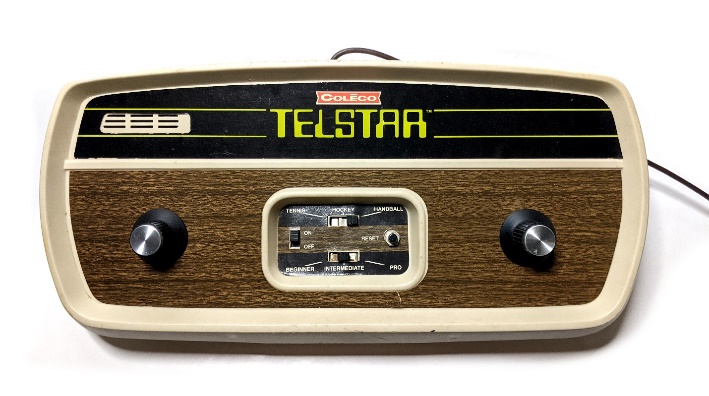
Figure 7. A photograph of the Residual Media Depot’s Coleco Telstar (1976). Click image to enlarge.
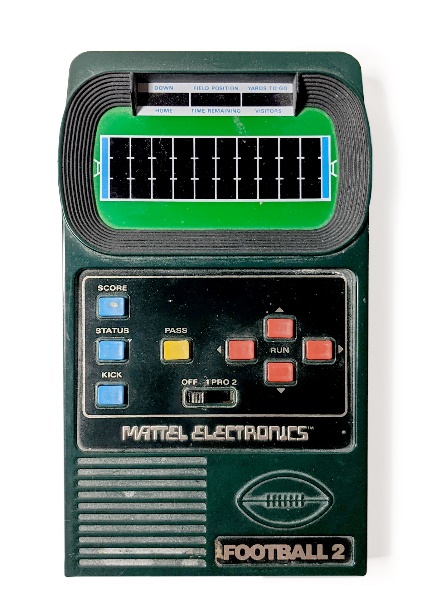
Figure 8. A photograph of the Residual Media Depot’s Mattel Electronics Football 2 (1978). Click image to enlarge.
What we define as unexceptional consoles thus elude the categorisation of major or minor platforms: they are the mundane, the forgotten and the unarchived. When scholars, fans and even developers lose interest in a technology, such devices become under-documented, understudied and relegated to mere footnotes in discussions of allegedly more compelling devices. Since many of these consoles have been deemed uninteresting, they have not been maintained or documented. This makes it difficult for anyone to get their hands on these objects or even find the correct vocabulary to search for them. In the context of cataloging, this creates difficulties in determining what can be said about a videogame console, including its purpose, technological assemblage, or even its name.
What is useful about documenting these devices in this manner? Broadening the archive of videogame hardware goes beyond merely filling in blanks in the historical record. Such work is valuable for several reasons. First, it can foster research approaches that attend to broader developments in videogame history, such as advertising strategies, manufacturing standards and everyday use. Mundane elements of mundane consoles -- such as cables, switchboxes, packaging and other ephemera -- shape the industry and lead to trends or standards that For example, by tracing the development of videogame console switchboxes through the 1970s and 1980s, scholars can plot a trajectory for home video connection standards (RF vs. composite) and pick out technological outliers. A prime example of the latter is the ill-fated RF switchbox for the Atari 5200, which transferred power to the console through its RF cable. To this day, Atari aficionados worriedly recount tales of the sparks that leapt from the device if it was knocked or jostled. But, to understand and define outliers as such, scholars first need to understand how these devices departed from typical trends or standard procedures in the first place.
This brings us to the second reason we advocate for the study of unexceptional consoles: understanding broader trends in videogame hardware helps us avoid historical revisionism by challenging the dominant innovation narrative. Consoles’ claims to firstness -- the first console in the home, the first console with this or that processor -- often lack nuance, but they become entrenched in the historical imaginary because of how they are canonized. If the only evidence for claims to firstness are well-circulated advertising materials legitimized by gender, race and class, it is worth pausing to consider how reliable such sources are. This is why it is important to view hardware in collections alongside contemporaneous devices, regardless of their status in the canon; doing so allows us to study these objects in-context and on their own terms, reminding us that historical narratives could have been otherwise.
To advance this claim, we follow the work of media archaeologists who have advocated for a hands-on exploration of media objects. Material collections -- especially those that maintain packaging and other ephemera -- preserve records of what has been selectively written out of game history. Such collections and allow us to seriously challenge arbitrary claims that scholars have inherited -- in part from marketing filigree.
Third, increasing the scope of the videogame archive allows scholars to contest conventional historiographies constructed out of easily accessible documentation of prominent (and privileged) historical actors. Kocurek has observed that such an approach to history “is not a history so much as a chronicle, a ‘greatest hits’ of the historical record,” one that often writes out the labor of women and other minorities in the industry (2017, p. 66). Huhtamo has similarly critiqued the “chronicle era” of historical writing on videogames as being detached from the wider cultural conditions that occasioned videogames’ release and reception, leading to approaches characterized more by the glee of a fan than the analytical eye of a scholar (2005, p. 3). Recent years, however, have seen a shift toward what Guins dubs an “era of collection” characterized by an impulse to document, preserve and study materials of the past in personal and institutional collections (not unlike the Residual Media Depot) (2017, p. 4). The ability to access collections and archival materials allows scholars to challenge existing chronicles through research that they can substantiate with more than bombastic advertising and on-record corporate interviews. Both naturally downplay challenges and failures to preserve a rose-tinted view of gaming companies [8]. This era of collection in which scholars have considerably more access to repositories of hardware, annotated user manuals, tape-laden packaging and other ephemera in various states of distress allows them to conduct historical research that they previously could not. Although access remains unavailable to many -- often requiring institutional credentials which are rarely equitably doled out -- these archives of understudied materials have the potential to yield new arguments about videogame history. Broadening the collections to include objects outside the canon opens space to consider the social, cultural and discursive histories of videogames that have not yet been given much leeway.
Along this vein, scholarly engagement with early home consoles and their ephemera offers insight into the material imaginary of the time and the alternative histories that might have been. Contemporary discourse on inclusion, intersectionality and intergenerational equity in videogames tends to present deviations from the white, heteronormative subject as a radical shift and a novel challenge to the status quo, but hands-on engagement with material collections reveals that these divergences have always been there (Wershler et al., 2021). The box art for the Bally Professional Arcade (1981), for instance, depicts people with a range of identities playing together in and out of the home. Drawing on imagery of public arcades, this iteration of the Bally Professional Arcade box is a peculiarity; consoles from that era tend to show white, heterosexual families gathered around the hardware object. The Bally Professional Arcade is important because it epitomizes the kind of lost future that media archaeology privileges: material evidence that events in the historical record -- including the development of exclusionary gamer subjectivity -- could have been otherwise.
In documenting unexceptional consoles, we are attempting to be mindful of the media archaeological pitfalls of this work. That is to say: we recognize the dangers of claiming to “discover” a new console. This project is much less about unearthing forgotten objects as it is about recording that which is already there. Repurposing Williams’ notion of the dominant, residual and emergent to talk about technology, Acland points out that studying new media often comes at the expense of considering continuities with existing objects, networks, practices, or techniques (Acland, 2007, p. xx). This scholarship is dialectical in nature; residual media are not lost or hidden away; they merely become less prominent. By talking about these games -- and, on a meta level, by writing this article -- we are activating the dialectic by bringing these technologies back into the conversation.
We posit that working closely with material research collections is key to developing a different approach to the study of media objects, one that does not hinge on canonization, narratives of innovation or claims of (re)discovery. Seeing these objects in sequence alongside their paratexts allows us to identify salient patterns and trends -- from what their varying cable lengths say about their positioning in the home to whom their box art identifies as intended users. This approach has the potential to generate more mindful and inclusive videogame histories.
Case Study: An Odyssey of Odysseys
Thus far in this article, we have addressed several challenges inherent in studying videogames, specifically in studying those that fall outside of the established canon of game studies. We have also elaborated on the idea of unexceptional consoles, of resounding success or compelling failure in the annals of game history. Magnavox’s line of Odyssey home videogame consoles (released from 1972 to 1978) is a potent example. While the Odyssey brand boasts over a dozen devices, only a small number of them received sustained attention from scholarly, hobbyist and industry stakeholders. By embarking on our own odyssey of Odysseys, we can begin to unfurl the discourses that guide certain devices toward prestige and others to mundanity.

Figure 9. Photograph of the Residual Media Depot’s Magnavox Odyssey (1972), with some of its ephemera. Click image to enlarge.
Released in 1972, the Magnavox Odyssey (Figure 9) occupies a foundational yet understudied role in games scholarship. Released at a time when the term “videogame” had not yet entered the popular imaginary, it was presented as “the electronic game of the future” and manifested as an intriguing chimera of electronic curiosity and boardgame. While we have been hesitant to embrace claims of firstness in this article, the Odyssey is almost unanimously heralded as the first commercially available home videogame console across industry, user and academic discourses [9]. It is this distinction that has paradoxically cemented its legacy in videogame history while simplifying its impact to that of a steppingstone. Institutional accounts gesture toward the Odyssey as the first home videogame console while emphasizing its primordial nature -- the Computer Museum of America likens the device to “the first pancake” (Lewin, 2020) and highlights its clunkiness when compared to more-polished successors such as the Atari VCS and the NES. Hobbyists seem to oscillate between venerating the device via online documentation practices (Winter, n.d.) or mocking it with unboxing-style videos. Perhaps most prominently, the Angry Video Game Nerd has ranted about the device’s confusing assemblage of hardware, software and peripherals, using the Odyssey’s trailblazer status as an excuse to both document and lampoon it (Rolfe, 2009).
There is a strange juxtaposition in this type of rhetoric. On the one hand, the Odyssey’s agreed-upon status as the first commercially released videogame console appears to bestow it automatic prestige, enhanced by the distinction of its creator, vaunted toy-maker Ralph H. Baer. As noted by many scholars, the link to Baer plays into media studies’ tendency to favor teleological histories (Apperley & Parikka, 2018, p. 352) and single-creator (i.e., “great men”) fallacies (Arsenault, 2017, p. 11). On the other hand, the Odyssey’s difference from modern videogame devices and its resistance to digital study (it is nearly impossible to play without its sprawling collection of paper and plastic ephemera) limits deeper reflection on the console. This, alongside the device’s limited availability and dearth of corporate documentation, locks the Odyssey in stasis -- neither truly forgotten nor a greatest hit, but nonetheless entrenched as the progenitor of home gaming devices.
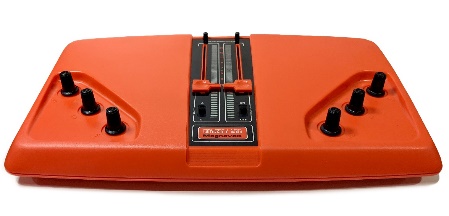
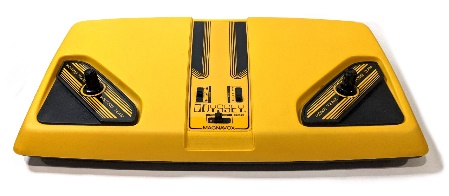
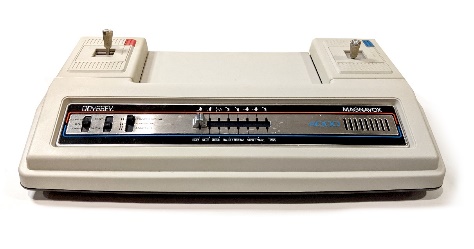
Figures 10, 11 and 12. Three Magnavox Odysseys from the Residual Media Depot’s collection. From top to bottom: Odyssey 100 (1975), Odyssey 300 (1976) and Odyssey 4000 (1977). Click any above image to enlarge.
In comparison to the original release, Magnavox’s later devices in the Odyssey line suffer from a serialized ambiguity akin to Atari’s one-and-done Pong devices. Rapidly produced between 1975 and 1977 and differentiated through vibrant color schemes and numbers ranging from 100 to 4000, each Odyssey includes 2-4 game modes: Tennis, Hockey and, in later releases, Smash (a variation on squash) and Practice (a single-player version of Smash). The form factor of the devices is perhaps their most striking feature. Each Odyssey resembles a brightly colored surfboard adorned with knobs and switches, with a similar design philosophy persisting through every device except the Odyssey 3000 and 4000. Both console variants added removable controllers and more angular form factors to the original design (Figures 10, 11 and 12) [10]. Despite providing a comparable game experience to the now-ubiquitous Pong, these candy-colored consoles have failed to accumulate the same amount of cultural cachet -- overlooked or relegated to footnotes in chronicles of more celebrated devices.
What factors drove these later entries in the Odyssey line into unexceptionalism? The technological advancements and sales numbers that are so important to industry-centric narratives are worth scrutinizing. Whereas the Odyssey was regarded as revolutionary despite its status as an oddity, the Odyssey 100 lacks many of the bells and whistles present in even the earliest Pong consoles (such as on-screen scoring and integrated sound). Later entries in the product line integrated these features alongside new game modes and removable controllers but, ironically, these iterative improvements diminished the distinctiveness of each device. While the Odysseys have relatively straight-forward labeling, especially when compared to the deluge of nearly identical Pong machines and Electronic TV Scoreboards, comparing the capabilities of each device is quite challenging. It is not immediately evident what advantages the yellow surfboard with one dial boasts over the white surfboard with three dials, especially when such devices are severed from informative paratexts such as boxes and manuals.
Of course, commercial success also plays a role and certainly cannot be overlooked when considering the Pong-mania of the mid-seventies. There are only a few sources that estimate how many Odysseys were shipped during the product series’ lifespan, but Magnavox’s sales seem to pale in comparison to Pong’s explosive success. Pong’s initial home console, released under the Tele-Games brand, shipped 150,000 units in Christmas of 1975 (Kent, 2001, p. 87) -- compared to the 50,000-100,000 Odyssey 100s and 200,000 Odyssey 200s sold across their entire lifespans (Smith, 2019, p. 173). These figures, alongside the immense popularity of Pong arcade machines, established Pong as the Kleenex® of ball-and-paddle games despite competition from numerous videogame developers. In fact, similar devices are often inaccurately derided in scholarly, industry and user discourses as imitators or clones, even when such claims do not line up with official histories. For example, although Pong (1972) is often credited as the archetypal ball-and-paddle videogame, the initial Magnavox Odyssey featured the incredibly similar Table Tennis (Lowood, 2009, p. 16). However, cultural impact appears to have eclipsed technical correctness. From That '70s Show to The Simpsons (Figure 13), every digital ball-and-paddle game is Pong in the same way that every frozen desert-on-a-stick is a Popsicle®. Thus, studying the unexceptional invites scholars to challenge erroneous claims to firstness and explore the cultural, technical and discursive conditions that conferred the cultural capital of Pong to Atari rather than Magnavox.

Figure 13. A scene from The Simpsons first Treehouse of Horror episode (Moore, 1990). Click image to enlarge.
The final entry in the Odyssey line, the Odyssey 2 (1978), is unexceptional for slightly different reasons than its predecessors. While a commercial success -- it sold more than two million units over its lifespan and became the third-best selling console of the second hardware generation (Forster, 2005, p. 30) -- the Odyssey 2 is perpetually overshadowed by the Atari 2600’s financial and cultural success. Tellingly, the most detailed scholarly account of the 2600’s rise and fall makes no mention of the Odyssey 2 (Montfort & Bogost, 2009, p. 121), presenting Mattel’s Intellivision as Atari’s main competitor while crediting the original Odyssey for putting into motion the technical and commercial processes that led to the home videogame industry (2009, p. 11). Neither a resounding success nor a spectacularly interesting failure, the Odyssey 2 occupies an unexceptional middle ground and, as a result, has never garnered much scholarly interest.
Several initial observations about the Odyssey 2’s inputs, peripherals and software content can be made that contribute toward interpretations of competing devices or gesture toward compelling avenues of study. Unlike other devices at the time, the Odyssey 2 included a full alphanumeric membrane keyboard for computer programming and educational games. Though abysmal to type on by contemporary standards, this type of keyboard became popular with home computers in the early 1980s; its inclusion speaks to Magnavox’s desire to position their system as both playful and educational -- as their aptly titled Computer Intro! (1979) excitedly proclaims.
On the software side, taking cues from the first Odyssey and attempting to reverse their dwindling fortunes, Magnavox launched the Master Strategy Series of hybrid games that combined virtual battles with tabletop gaming. Inspired by Dungeons & Dragons and with a narrative that draws loosely from J. R. R. Tolkien’s The Lord of the Rings, the series’ launch title, The Quest for the Rings (1981), invited players to embark on a fantasy co-op adventure. Straddling the line between boardgame and videogame, this title can prove to be a fruitful object of study for scholars of both digital and analogue games.
Although the Odyssey 2 ultimately could not compete with the Atari and the VCS, there are still reasons to study the system alongside its competitors -- or perhaps alongside personal computers and boardgames. As with many objects released in the nascent years of videogame history, the Odyssey 2 occupies a liminal space that refuses easy categorization; including it in our histories has the potential to render more legible the material conditions in which videogames circulated at the time.
Conclusion
Throughout this article, we have argued that attending to material collections of unexceptional consoles -- including hardware, software and all manner of ephemera -- can enrich videogame scholarship in multiple ways. First, it allows us to generate approaches that are mindful of broader trends in the industry and its cultural milieux than “greatest hits” scholarship might make visible on its own. Second, it allows us to introduce provocations to erroneous claims to firstness. Third, it invites us to contest conventional, chronical-era videogame historiography.
Furthermore, this engagement urges scholars to move beyond academic sources to glean insights from paratexts and draw upon the expertise of hobbyist communities generally overlooked in preservationist discourses. When approaching unexceptional consoles, there are inevitably numerous challenges related to identification and historicization. Inconsistent technological configurations, irreconcilable naming conventions and under-documented hardware iterations all pose questions for which there are no easy answers. When scholars encounter families of devices such as RadioShack’s ill-defined Electronic TV Scoreboards, Magnavox’s serialized Odyssey consoles, or the plenteous Pong consoles released in the 1970s, they will rarely find existing scholarship sufficient. To recall Apperley and Parikka (2018), unexceptional consoles are not self-evident in the way that modern platforms are, and they require both material engagement and informal expertise to fully circumscribe.
However, it is important to remember that material collections are difficult to access and are not available to most people who have an interest in videogame history. There are only a handful of places where one can encounter large collections of early home computing technologies in Canada, perhaps most notably the vast Syd Bolton Collection at the University of Toronto Mississauga (Syd Bolton Collection, 2023). Due to institutional protocols, such locales tend to limit access to a narrow selection of staff, researchers and, if they are lucky, students. While we pose that materiality is vital to the study of videogame history and that hobbyist collection and documentation processes are integral to such research, these overtures presume a level of privilege that most do not possess.
Even with our institutional resources and connections, we have only scratched the surface of what can be learned from studying unexceptional consoles. Our hope is that this initial writing, coupled with our continued research at the Residual Media Depot, will help us develop new approaches to thinking about videogame history. With this in mind, our future efforts include mobilizing the resources we do have to develop robust and publicly available documentation for interested parties to engage with.
To make the most of what Guins calls the era of collection, it is necessary to look beyond Nintendo, Sony and Microsoft to talk about those systems that have been relegated to the margins of both our chronicles and collections. Engaging with unexceptional consoles and their paratexts can ultimately enable us to produce more inclusive videogame histories that eschew dominant innovation narratives in favor of more mindful studies of videogame hardware, development and circulation.
Acknowledgements
The authors would like to thank Dr. Darren Wershler at the Residual Media Depot at Concordia University for supporting this research.
Endnotes
[1] The Magnavox Odyssey (1972) featured a ball-and-paddle game titled Table Tennis that predated Pong by a number of years (Lowood, 2009, p. 16).
[2] The cataloging team consists of the authors, Michael Iantorno, who has been handling the material aspects of the documentation process, and Alex Custodio, who has been spearheading the development of the database.
[3] (GAMECIP) is a multi-year IMLS-funded joint initiative between the UCSC Library, UCSC Computer Science and Stanford University Library to improve library and institutional practice for computer games.
[4] The authors would like to acknowledge the irony of decrying the proliferation of Nintendo-focused scholarly research while simultaneously focusing much of their own academic attention on Nintendo hardware and software.
[5] There is an equal but opposite phenomenon when it comes to outstanding failures. Nintendo’s Virtual Boy became infamous through its universal derision by scholars, players and concerned parents alike; the device’s archive is consequently vast.
[6] It is also important to recognize that videogame hardware and software takes the military entertainment complex as one point of origin, which is equally imbued in the canon.
[7] Consider, for instance, the so-called canon wars of the 1980s and 1990s, a period during which educators argued for the inclusion of more works by women, people of color and other minorities on the syllabi for literature courses. In so doing, they challenged traditionalists who sought to maintain curriculums centered around the established canon. See Froula (1983). The #MeToo movement has catalyzed the return of similar conversations in Film Studies. See Harrison (2018). See also Staiger (1985).
[8] Additionally, such methodologies occlude less commercially successful aspects of videogame history since it is challenging to conduct corporate interviews with companies that no longer exist or that have closed their game divisions.
[9] The Odyssey was predated by Baer’s Brown Box prototype (1968), which could play several sports games. While never available to the public, it serves as a sort of ur-Pong, whose features have been replicated by numerous home videogame consoles (The Brown Box, 1967-68, n.d.). Its ability to connect directly to a television, as stated by Baer and others (Baer, 2000), is a key feature that separates it from earlier technologies such as Tennis for Two (1958).
[10] The Magnavox Odyssey 4305 is an outlier in these discussions, but it is difficult to study due to its rarity and lack of documentation. It is allegedly a 19-inch color TV with an Odyssey 300 or 500 built-in.
References
About the Project. (n.d.). The Game Metadata and Citation Project. Retrieved April 6, 2022, from https://gamecip.soe.ucsc.edu/about
Acland, C. R. (2007). Introduction: Residual Media. In C. R. Acland (Ed.), Residual Media. University of Minnesota Press.
Apperley, T., & Parikka, J. (2018). Platform Studies’ Epistemic Threshold. Games and Culture, 13(4), 349-369.
Arsenault, D. (2017). Super Power, Spoony Bards, and Silverware. MIT Press.
Atari VCS Store. (n.d.). Atari VCS. Retrieved April 6, 2022, from https://atarivcs.com/shop/
Baer, R. H. (2000). Who did it first? http://www.pong-story.com/inventor.htm
Bailey, M. (2021, February 13). Sensible Soccer: The classic that redefined football games with a single button. The Athletic. https://theathletic.com/2236482/2021/02/13/sensible-soccer-the-classic-that-redefined-football-games-with-a-single-button/
Beaty, B., & Woo, B. (2016). The Greatest Comic Book of All Time: Symbolic Capital and the Field of American Comic Books. Springer.
Bourdieu, P. (1983). The Field of Cultural Production, or: The Economic World Reversed. Poetics, 12. https://doi.org/10.1016/0304-422X(83)90012-8
Certeau, M. (1980). The Practice of Everyday Life. University of California Press.
Chaplin, H. (2007, March 12). Is That Just Some Game? No, It’s a Cultural Artifact. The New York Times. https://www.nytimes.com/2007/03/12/arts/design/12vide.html
Eisenstein, E. L. (2005). The Printing Press as an Agent of Change: Vol. I and II (11th ed.). Cambridge University Press.
Forster, W. (2005). The Encyclopedia of Game Machines: Consoles, Handhelds and Home Computers 1972-2005. Gameplan.
Froula, C. (1983). When Eve Reads Milton: Undoing the Canonical Economy. Critical Inquiry, 10(2), 321-347.
GAMECIP - Computer Game Platforms. (2015, March 11). Open Metadata Registry. http://metadataregistry.org/vocabulary/show/id/354.html
Guichard, B. (2021, December 26). Roblox: Excellent Company, But High Valuation. NASDAQ.com. https://www.nasdaq.com/articles/roblox%3A-excellent-company-but-high-valuation
Guins, R. (2017). New...Now? Or Why a Design History of Coin-op Video Game Machines. American Journal of Play, 10(1), 20-5132.
Harper, A. (2014, September 4). Atari CX2600 Heavy Sixer and Light Sixer -- How to Tell Them Apart. Retro Games Collector. http://www.retrogamescollector.com/how-to-tell-an-atari-cx2600-heavy-sixer-from-a-light-sixer/
Harrison, R. (2018, November 9). Fuck the Canon (Or, How Do You Solve a Problem Like von Trier?): Teaching, Screening and Writing about Cinema in the Age of #MeToo. MAI: Feminism & Visual Culture. https://maifeminism.com/fuck-the-canon-or-how-do-you-solve-a-problem-like-von-trier-teaching-screening-and-writing-about-cinema-in-the-age-of-metoo/
Herman, L. (1997). Phoenix: The Fall & Rise of Videogames. Rolenta Press.
Huhtamo, E. (2005). Slots of Fun, Slots of Trouble: An Archaeology of Arcade Gaming. In J. Raessens & J. Goldstein (Eds.), Handbook of Computer Game Studies. MIT Press.
Jenkins, H. (2006). Convergence Culture: Where Old and New Media Collide. New York University Press.
Kent, S. L. (2001). The Ultimate History of Video Games: From Pong to Pokémon and Beyond (Vol. 1). Three Rivers Press.
Kirschenbaum, M. G. (2007). Mechanisms: New Media and the Forensic Imagination. MIT Press.
Kocurek, C. (2017). Ronnie, Millie, Lila -- Women’s History for Games: A manifesto and a Way Forward. American Journal of Play, 10(1), 52-70.
Lewin, B. (2020, June 22). The First Gaming Console. Computer Museum of America. https://www.computermuseumofamerica.org/2020/06/22/the-first-gaming-console/
Lowood, H. (2009). Videogames in Computer Space: The Complex History of Pong. IEEE Annals of the History of Computing, 31(3), 5-19. https://doi.org/10.1109/MAHC.2009.53
Magnavox Odyssey 500. (n.d.). Old-Computers.Com. Retrieved July 20, 2022, from https://www.old-computers.com/museum/computer.asp?st=1&c=1283
Martens, T. (2020, December 11). Review: The Game Awards wants to take video games seriously, but is the industry ready to follow? Los Angeles Times. https://www.latimes.com/entertainment-arts/story/2020-12-11/the-game-awards-2020-wrap-the-last-of-us
Marvin, C. (1988). When Old Technologies Were New: Thinking About Electric Communication in the Late Nineteenth Century. Oxford University Press.
Montfort, N. (2004, December 28). Continuous Paper: The Early Materiality and Workings of Electronic Literature. MLA Convention, Philadelphia. https://nickm.com/writing/essays/continuous_paper_mla.html
Montfort, N., & Bogost, I. (2009). Racing the Beam: The Atari Video Computer System. MIT Press.
Moore, R. (Director). (1990, October 25). Treehouse of Horror (No. 16). In The Simpsons. Fox.
New User Guide. (2023). Game Boy Resource. https://gameboy.github.io
Nicoll, B. (2019). Minor Platforms in Videogame History. Amsterdam University Press.
Peters, J. D. (2015). The Marvelous Clouds: Toward a Philosophy of Elemental Media. University of Chicago Press. https://doi.org/10.7208/chicago/9780226253978.001.0001
RadioShack Catalog. (1978). Tandy. https://www.radioshackcatalogs.com/flipbook/1978_radioshack_catalog.html
Rolfe, J. (Director). (2009, April 21). Odyssey (1972): Vol. Episode 68. https://cinemassacre.com/odyssey-1972-angry-video-game-nerd-avgn-episode-68/
Ruberg, B., & Phillips, A. (2018). Not Gay as in Happy: Queer Resistance and Video Games (Introduction). Game Studies, 18(3). http://gamestudies.org/1803/articles/phillips_ruberg
Smith, A. (2019). They Create Worlds: The Story of the People and Companies That Shaped the Video Game Industry, Vol. I: 1971-1982. CRC Press.
Staiger, J. (1985). The Politics of Film Canons. Cinema Journal, 24(3), 4-23. https://doi.org/10.2307/1225428
Syd Bolton Collection. (2023). University of Toronto Mississauga - - Archives & Special Collections. https://collections.utm.utoronto.ca/collections/syd-bolton-collection
Tassi, P. (2020, June 21). ‘The Last Of Us Part 2’ Is Getting Predictably User Score Bombed On Metacritic. Forbes. https://www.forbes.com/sites/paultassi/2020/06/21/the-last-of-us-part-2-is-getting-predictably-user-score-bombed-on-metacritic/
The All-New Atari VCS. (n.d.). Atari VCS. Retrieved July 20, 2022, from https://atarivcs.com/
The Brown Box, 1967-68. (n.d.). National Museum of American History. Retrieved June 14, 2022, from https://americanhistory.si.edu/collections/search/object/nmah_1301997
The Strong Museum of Play. (n.d.). Mattel Electronics Football Portable Electronic Game. Google Arts & Culture. Retrieved April 7, 2022, from https://artsandculture.google.com/asset/handheld-video-game-mattel-electronics-football-portable-electronic-game-mattel-inc/ggF3vOHhDKlHDQ
Weinberger, D. (2005). Tagging and Why it Matters (SSRN Scholarly Paper No. 870594). Social Science Research Network. https://doi.org/10.2139/ssrn.870594
Wershler, D. (2022). A Variantology of Research Collections. In J. Camlot, M. Langford, & L. M. Morra, Collection Thinking (1st ed., pp. 91-118). Routledge. https://doi.org/10.4324/9781003282303-8
Wershler, D., Custodio, A., & Iantorno, M. (2021, September 29). The Materiality of Exclusion: Historical Videogame Console Box Art and the White Heteronormative Imaginary. Game History Annual Symposium, Université de Montréal.
Wershler, D., Emerson, L., & Parikka, J. (2022). The Lab Book: Situated Practices in Media Studies. Univ Of Minnesota Press.
Winter, D. (n.d.). Atari home PONG systems. PONG-Story. Retrieved March 16, 2022, from http://www.pong-story.com/atpong2.htm
Wolf, M. J. P. (Ed.). (2008). The Video Game Explosion: A History from PONG to Playstation and Beyond. Greenwood Press.